TABLE OF CONTENTS
What’s a normal Motherboard temperature, and when should you be worried?
Where can you check your Motherboard’s temperature sensors, anyway?
In this article, I’ll cover how to monitor motherboard temperatures and fix motherboard overheating issues so you can prolong the life of your PC and enjoy optimal performance.
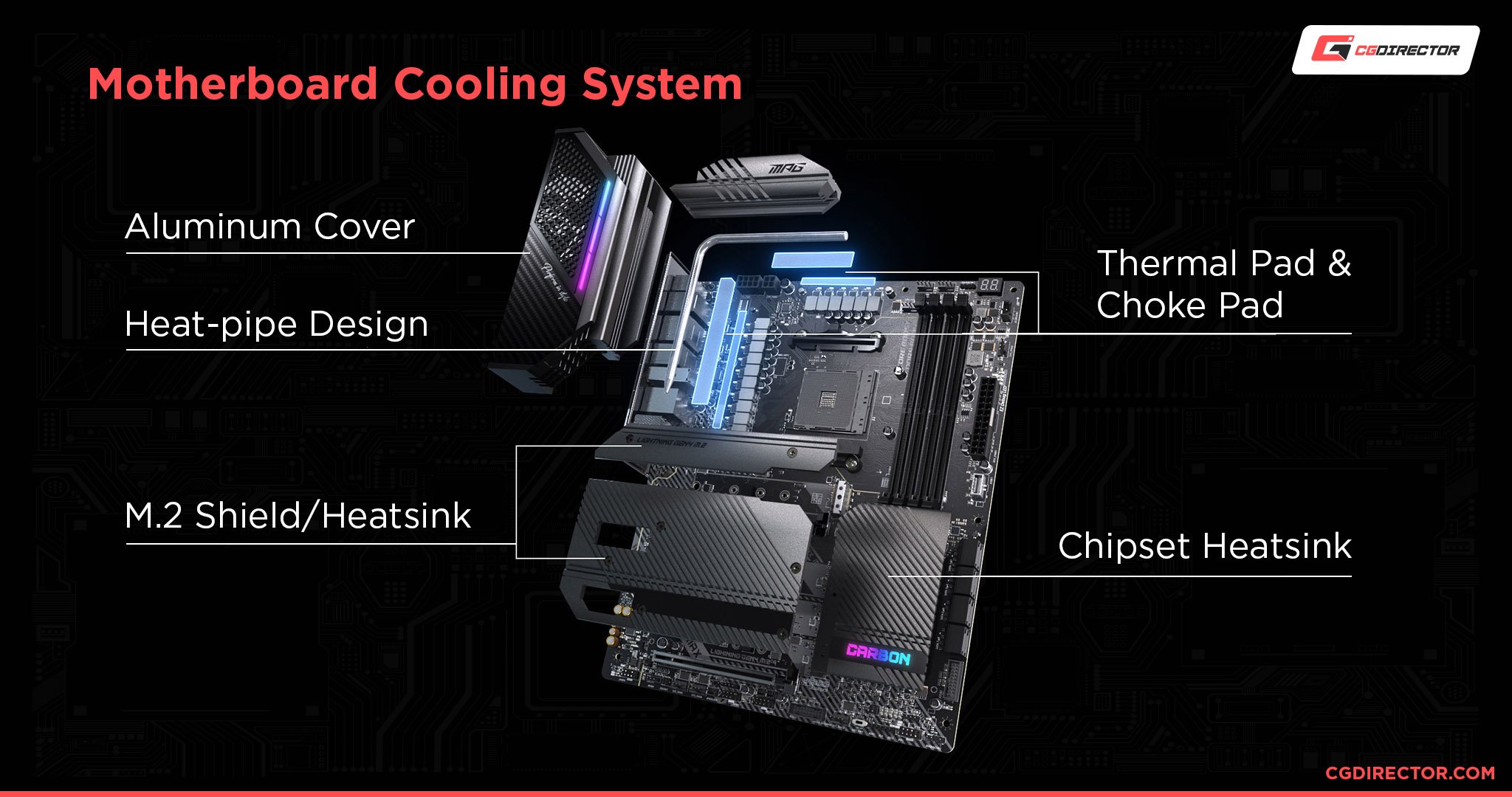
Source: MSI
Here’s the thing:
Motherboard temperatures are often overlooked because they’re not as important as the CPU or graphics card temperatures.
Also, it’s harder to keep track of motherboard temperatures if you’re not using the right tools.
While there are horror stories out there, it’s rare for a motherboard to overheat enough to cause serious damage.
Unless there’s a temperature sensor failure, your computer will usually shut itself down if it detects unusually high temperatures on any critical motherboard components. We’re talking temperatures above 99 Celsius.
However, it’s still a good idea to monitor the temperature of your motherboard to make sure it’s operating within a safe range.
That said, it’s perfectly normal for your motherboard to run a little hot when your computer is under a heavy load, such as when rendering a high-resolution video or working on a complex 3D modeling project.
What is a Safe Motherboard Temperature?
Generally, a safe motherboard operating temperature sits anywhere between 30 and 80 degrees Celsius (C).
If your motherboard temperature is above 80C, it might start to worry you a little, but fret not, it really hasn’t crossed danger territory.
Much of both your idle and load temperatures will depend on factors like your ambient room temperatures, airflow in your case, the hardware you’re using, the quality of your motherboard, and so on.
Most motherboard manufacturers will include the exact safe temperature range in their product technical specifications and manuals.
Specific models are rated to withstand up to 125 Celsius without the risk of physical damage.
From a practical standpoint, as long as your motherboard temps don’t cross 100C on extended loads, the board will do just fine.
Past that point, safety features will likely kick in and limit the power sent to your hardware. Yes, that won’t damage your PC in any way, but it will restrict the performance you can enjoy.
How to Monitor Motherboard Temperature
Unfortunately, not every motherboard has accurate temperature sensors, while some don’t even have any sensors at all.
Although the sensors might have the same tags, they’re often in entirely different locations from one motherboard to the next.
To view monitor your motherboard temperatures, I recommend using CPUID HW Monitor or HWInfo.
For this guide, I’ll use HWMonitor.
When you run the program, it will usually list your motherboard’s readings first, under the name of your motherboard’s manufacturer.
There will be a series of temperature readings under various codes, starting with TZ and then TMPIN. These are the sensors the program was able to identify on your motherboard.
The number of TMPIN sensors will depend on the model of your motherboard, some have as few as four, while others have more than eight.
HWinfo Motherboard Temperature Sensor Readings
On most Motherboards, HWinfo will list a couple of typical temperature Sensor readings.
These might have obscure names such as TMP0 or TMPIN3, but most likely some of them will be named according to a fixed location on your Motherboard. CPU, System, MOS, Chipset, PCIE_2, or M2_1 to name a few.
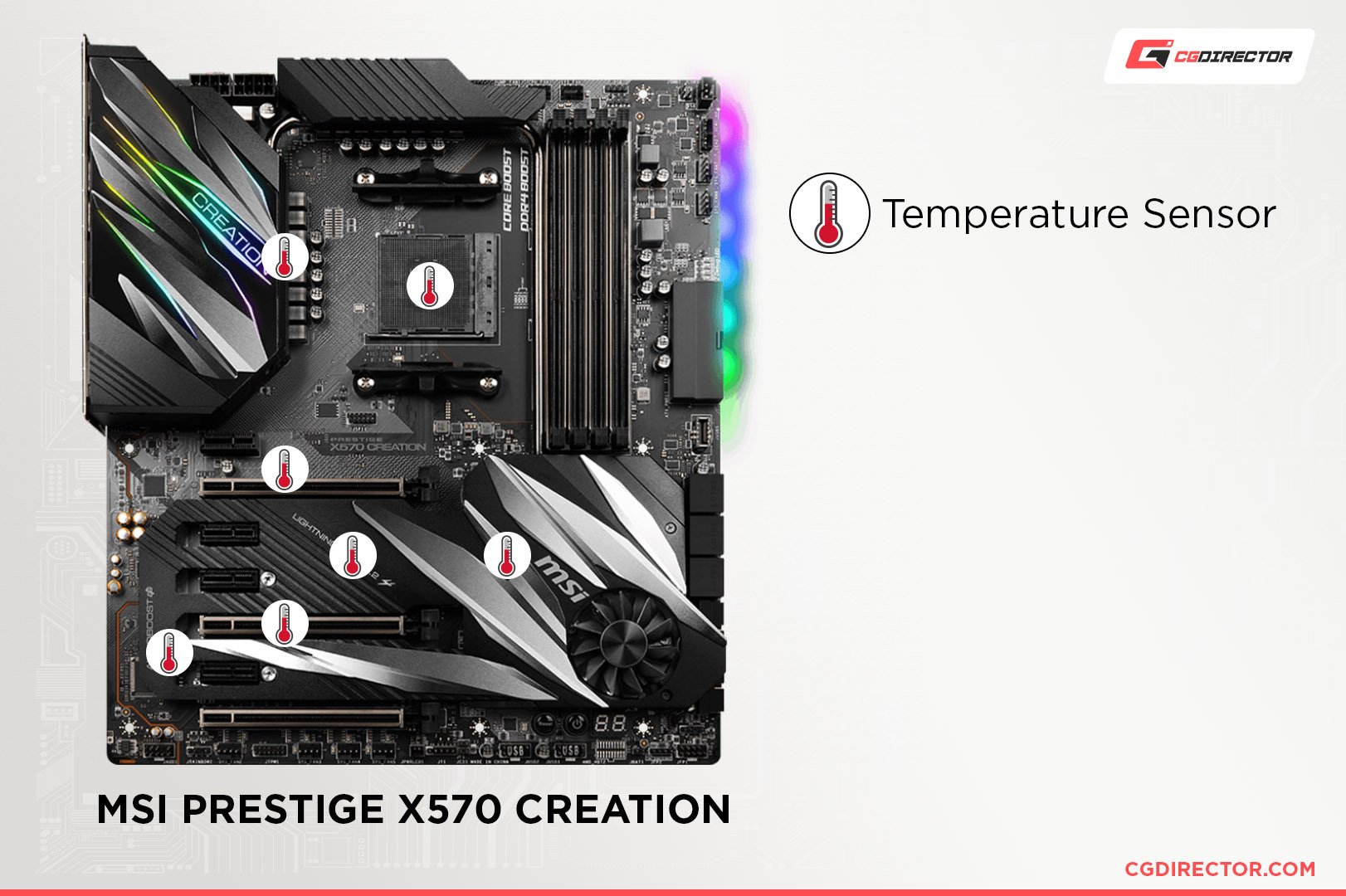
Source: MSI
If you need an exact diagram of where the TMPINS sensors are located, you will need to research your motherboard’s model number.
It can be challenging to figure out exactly where these sensors are located on your motherboard. Either way, the most important part is the actual temperature of any of these sensors.
They should all be under 60 degrees Celsius when the computer is idle or under light use.
If one or more is showing unusually high temperatures, that could point to a very real problem.
Consult Your Motherboard Manufacturer
Have you recently unpacked your brand new Motherboard, and after checking its temperature sensors, you see some unsafe values?
Before you take matters into your own hands, it’s best to reach out to your motherboard manufacturer for advice.
Most motherboards come with a warranty of 3 years or more, and you can have the board fixed or replaced free of charge.
Of course, if you need your system for work, you can’t afford to remove the motherboard, send it to a factory for inspections, and then wait for a response.
Motherboard TMPIN Temperature Too Hot
There are some cases where one specific sensor on the motherboard, such as TMPIN4, reports extremely hot temperatures, such as 125 Celsius or higher.
Don’t worry; it’s actually a common issue with the monitoring software.
The reason a TMPIN on your motherboard has a temperature of 125 Celsius or higher is that monitoring programs set the default reading to 125/126 Celsius when they can’t detect a reading from that sensor.
In other words, the sensor is likely faulty and just showing the wrong data.
In most cases, if those sensors really did reach those temperatures the computer would shut down to prevent further damage.
If you suspect something might be wrong with the temperatures, you can try a different hardware monitoring program such as HWINFO64 or a program from your motherboard’s manufacturer.
There’s a good chance another hardware monitoring program will show different motherboard temperatures data. There are plenty of free programs you can use to investigate.
Another idea is to use an IR thermometer, pointed at various locations around the motherboard, to see get the real-time temperature. 9 times out of 10 when the motherboard shows temperatures above 100 Celcius it means the sensor has malfunctioned.
It also wouldn’t hurt to update the BIOS. BIOS updates usually squash bugs and offer performance enhancements.
How to Fix an Overheating Motherboard
While a motherboard can work perfectly fine at higher temperatures, you can take some measures to bring them down to reasonable levels.
I’ll cover the most practical steps to fix an overheating motherboard below.
Improve Case Airflow
Improving the airflow in your case is one of the best ways to fix an overheating motherboard.
In general, you want fresh air circulating through your computer at all times to keep your PC internals cool.
In some cases, simply rearranging the position of your computer can dramatically improve airflow.
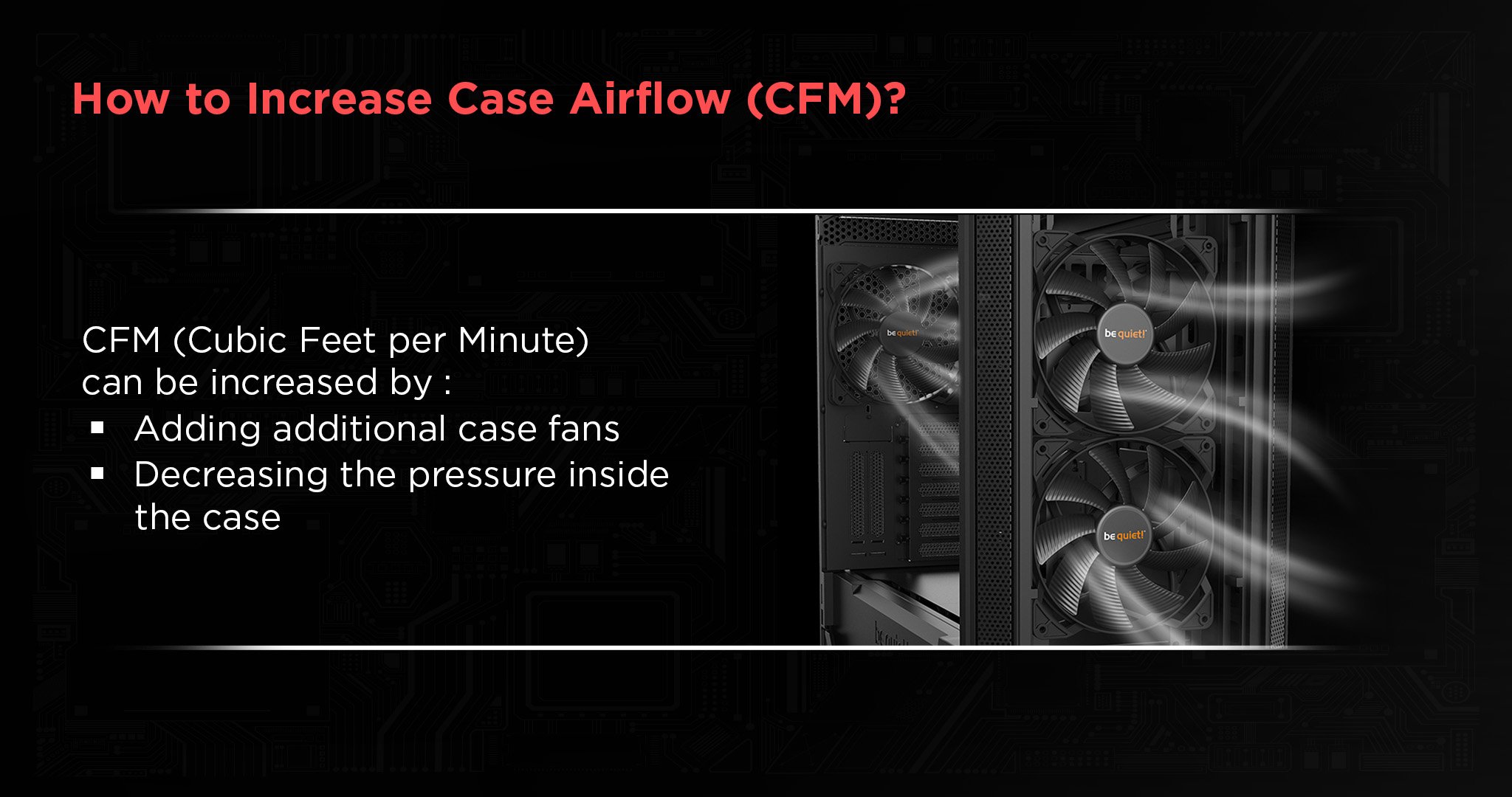
Ideally, you’d want an adequate room in front, behind, and below your computer, so that your case and radiator fans have the space needed to exhaust hot air and draw in cool air.
Another easy tip is to raise your computer slightly off the floor. Lifting the computer off the floor is especially important if you have carpet, as it can block airflow to the power supply, causing it to overheat.
With these simple tips, you can decrease the temperature of your motherboard (and other components) by a few degrees.
Depending on your case’s design, you could also consider installing fans that offer higher RPMs, better static pressure, or even adding more fans to your setup.
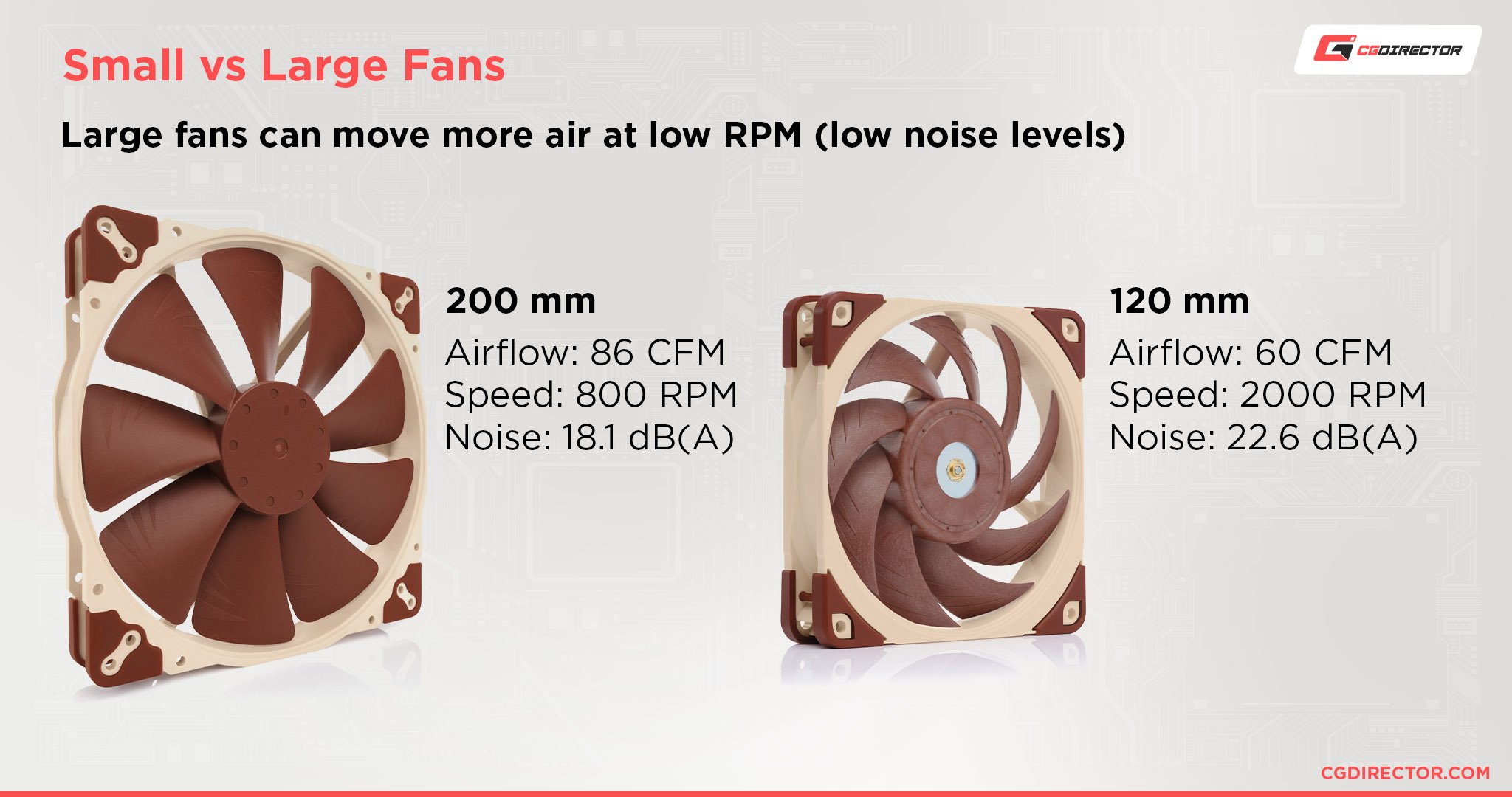
Talking of fans, cranking up fan speeds is another good way to bring down temperatures. Most motherboards offer a fan control utility in the BIOS (make sure they’re set to the right mode – PWM or DC).
Increasing the fan speed will force more air through your system, although this will make your computer a little louder.
Clean Interior Case, Fans, & Fan Dust Filters
Another nifty little trick to bring down motherboard temperatures is to clean the inside of your case, the fans, as well as any dust filters your fan or case might have.
You can use a light brush to remove dust from the motherboard and compressed air for hard-to-reach spots (heatsinks, vents, power supply, etc).
If you haven’t done this in a while, I’d recommend wearing a mask (we all have those, right?) during this process. It can get quite dusty.
Cleaning the intake and exhaust fans is essential too.
There will likely be a dust filter directly in front of your intake fans that you can remove and clean. A thick enough layer of dust will block a considerable amount of air.
Cleaning a PC is very straightforward, and we recommend cleaning it at least once every few months to guarantee stable performance.
Disable Overclocks
Just like other hardware in your system, the motherboard can get considerably hot when you’re running overclocked CPUs (or even GPUs if the airflow is particularly iffy).
I suggest disabling any overclocks and then checking if your motherboard temps improve.
If the temperature decreases when you disable your overclocks, it’s likely that either your case or your motherboard (or both)are struggling to keep up with the overclock.
Replace Motherboard Heatsink Thermal Pads
Before diving into this one, I have to warn you: only attempt this if you know your way around PC parts well enough because you’ll need to completely remove your motherboard from your system.
For that reason, I only recommend doing this if you’re very familiar with PC parts and know what you’re doing because de-assembling and then re-assembling a computer can lead to all kinds of issues.
If you aren’t 100% confident, I’d contact the motherboard manufacturer for a solution if you’re still within warranty. Else, your local PC shop with an expert at the desk is always an option.
That said, replacing the thermal pads on your motherboard can help improve temperatures. Just make sure to test and confirm whether the sensors are not reporting high temperatures due to a malfunction.
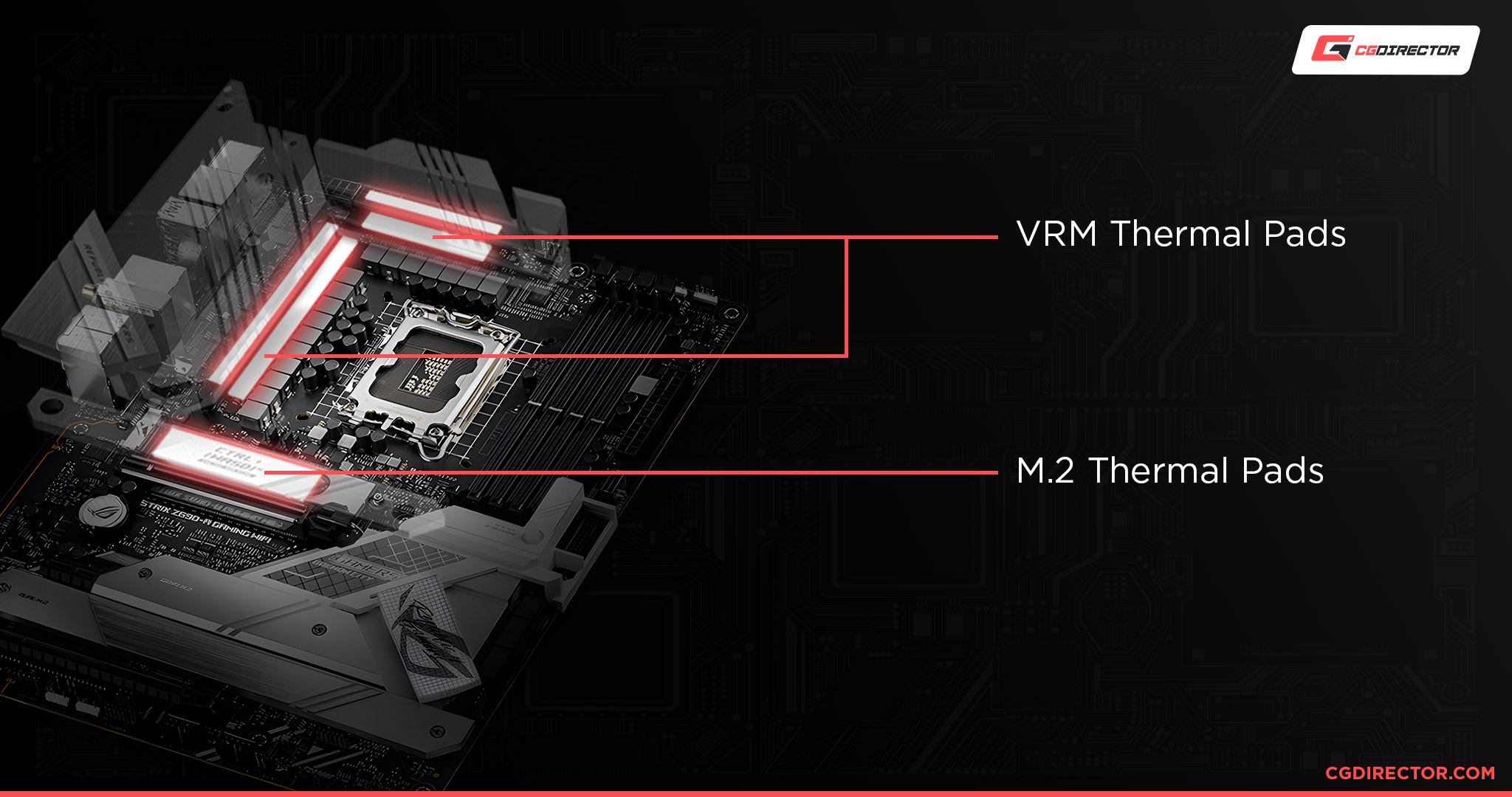
To double-check, use an IR thermometer on your motherboard.
Modern motherboards, especially those designed for professionals, often have small heatsinks with cooling pads to cool down certain motherboard areas.
The thermal pads can wear down after years of use, making them less effective at heat dissipation.
You can buy sheets of conductive thermal pads and cut them to match the size of the heatsinks.
The idea is to pop out the motherboard heatsinks, remove the old thermal pad and/or adhesive residue, install a new pad, and then re-attach the heatsinks.
The heatsinks are usually fastened to the board with either small plastic wedges or screws located on the back of the board.
If you’re not sure what screws will open the heatsink, check for video guides for your motherboard model. However, tread cautiously because you don’t know whether the person creating the video knows his stuff.
If the thermal pads were causing the motherboard to overheat, replacing them should bring the temperatures back down.
Conclusion
To summarize, while it’s rare, motherboards can overheat and cause all kinds of issues. Use a program such as HW Monitor to check your motherboard’s temperature.
If you see sensors reporting insanely high temperatures like 125/126°C, there’s a good chance those sensors are simply broken and reporting incorrect data. Confirm with an IR thermometer.
However, if the temperatures on load consistently cross 100°C, try out at least a few of the more straightforward steps covered above.
You could try improving airflow by cleaning your PC case, replacing fans, setting them to spin faster, or as a last resort, even replacing the thermal pads on your motherboard’s heatsinks.
I suggest contacting your motherboard manufacturer for advice, especially if you’re under warranty.
Over to You
it’s a good idea to keep an eye on your motherboard’s temperatures. But as long as the temperatures stay well below that scary 100°C mark, it’s working just fine.
If you have any questions about your motherboard’s temperature, let me know in the comments below or on our forum!
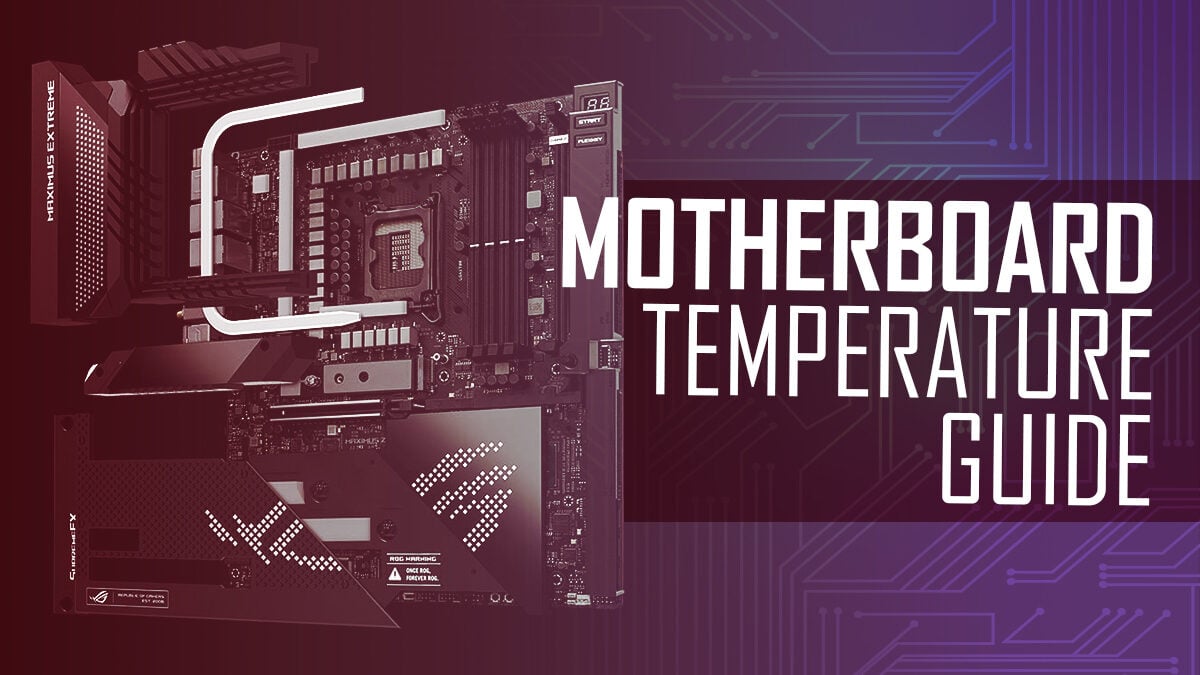
![Where Do You Connect PC Fan PWM Cables To? [Beginner’s Guide] Where Do You Connect PC Fan PWM Cables To? [Beginner’s Guide]](https://www.cgdirector.com/wp-content/uploads/media/2023/12/Where-Do-PWM-Cables-Go-Beginners-Guide-Twitter-1-594x335.jpg)
![How To Connect Front Panel Cables To Your Motherboard [Guide] How To Connect Front Panel Cables To Your Motherboard [Guide]](https://www.cgdirector.com/wp-content/uploads/media/2024/01/How-To-Connect-Front-Panel-Cables-To-Your-Motherboard-Twitter-copy-1-594x335.jpg)
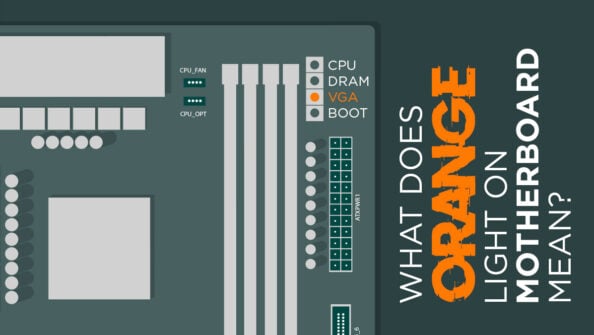
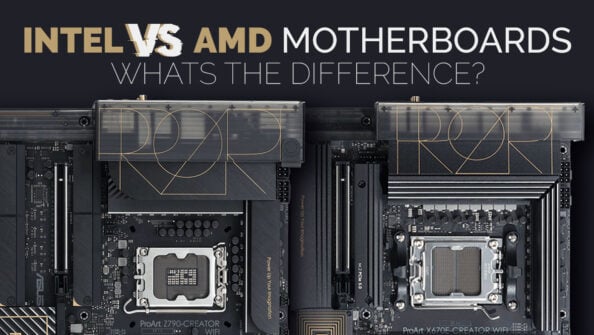

3 Comments
30 June, 2024
hi i just bought a new pc yesterday
while everything works fine
my mos under stress test was going up to 97C and stays there
my motherboard is msi pro H610M G ddr4
and i have an intel i5 1360kf
is that temp normal?
8 May, 2023
Hey,
I have a motherboard called srock 970 extreme 3
and the highest temperature of is 127 degrees celsius…
there are 2 censors saying it has 127 degrees some parts are 80 degrees, 40 etc…
that can also be clearly felt and also smelled…
should I do something then?
I can’t get the heatsinks and thermal pads off because of clips I don’t think I can remove them without cutting the clips…
Mvg. G. Arno
9 May, 2023
Hey Geerts,
127°C is extremely high. Which sensors are reporting this? The Motherboard is over 12 years old now, so it’s safe to say the thermal paste has probably dried up or has been pumped out.
Alex